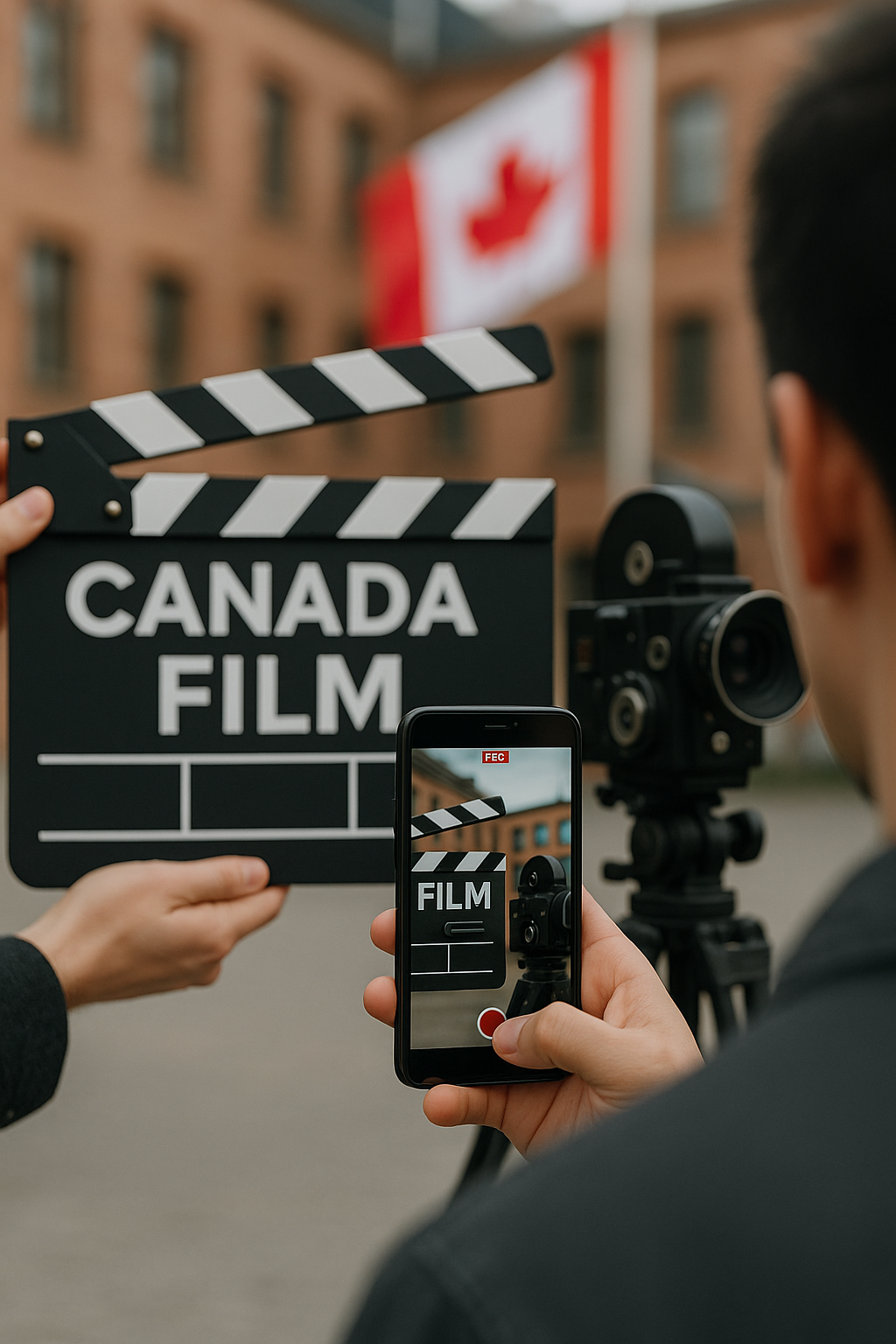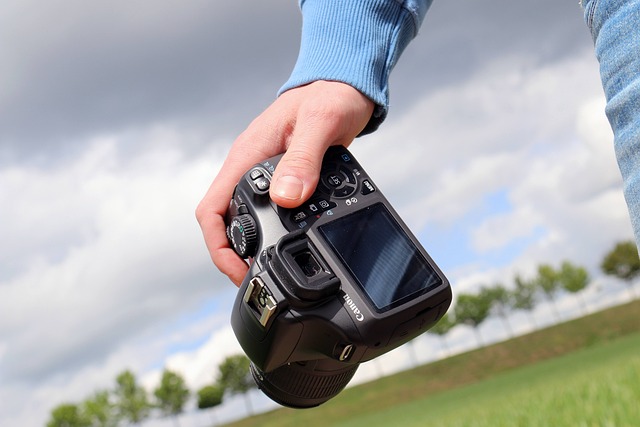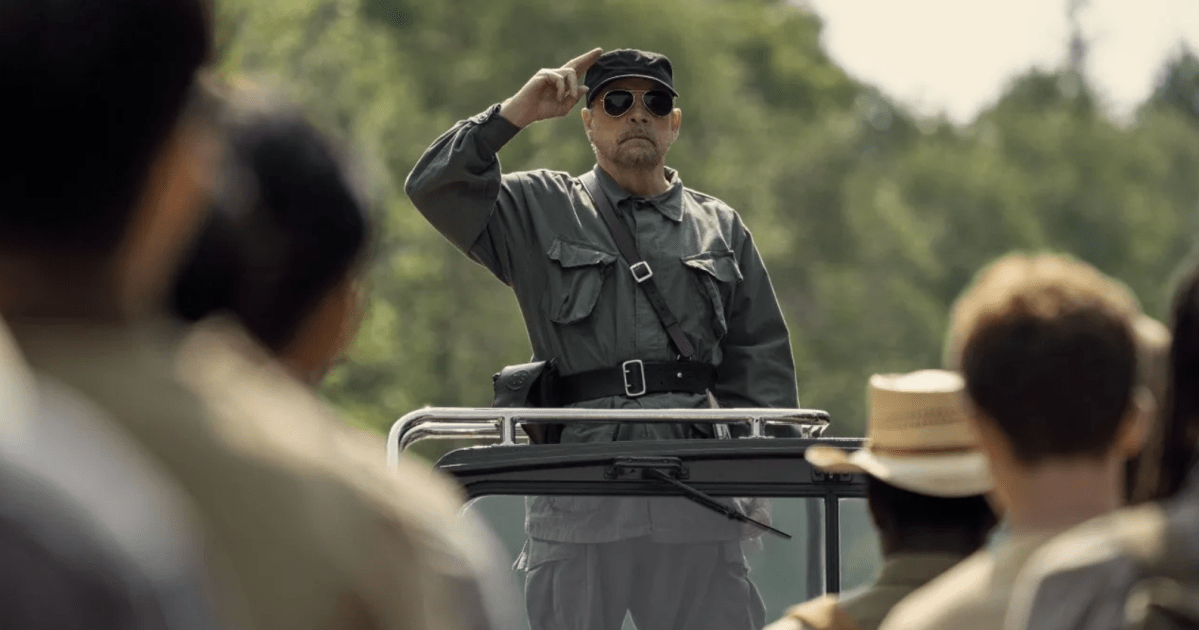Canada’s film industry has long been celebrated for its breathtaking landscapes, rich storytelling tradition, and world-renowned film festivals like the Toronto International Film Festival (TIFF) and the Vancouver International Film Festival (VIFF). But in recent years, a new movement has been sweeping across the country’s cinematic landscape—mobile filmmaking. Powered by the ever-evolving technology in our smartphones, mobile filmmaking is democratizing the art of storytelling, allowing Canadian creatives from coast to coast to shoot, edit, and distribute their films—all from the palm of their hands.
Let’s dive into the factors driving this trend, explore how Canadian filmmakers are embracing mobile technology, and learn how anyone with a phone can become the next big voice in Canadian cinema.
A New Era for Canadian Storytelling
For decades, filmmaking in Canada required access to expensive cameras, production crews, and post-production studios. Aspiring filmmakers had to either secure large budgets or rely on government grants and funding from organizations like Telefilm Canada or the National Film Board (NFB). But smartphones have changed the game.
Today’s flagship smartphones feature 4K video capabilities, cinematic stabilization, HDR recording, and advanced editing apps, all packed into a device that fits in your pocket. This shift has lowered the barrier to entry for countless Canadians, allowing them to capture their stories in ways that were once impossible without professional-grade equipment.
Canadian Creators Leading the Charge
Across the country, Canadian filmmakers are embracing smartphones as legitimate filmmaking tools. Let’s look at some examples:
1. Toronto’s Indie Film Scene
Toronto’s indie film community has been an early adopter of mobile filmmaking. Workshops, meetups, and festivals like the Toronto Smartphone Film Festival celebrate short films shot entirely on phones. Creators showcase everything from dramas to experimental films, proving that powerful storytelling doesn’t require expensive gear.
2. Vancouver’s Tech-Savvy Creatives
Vancouver, often called “Hollywood North,” is home to tech enthusiasts and filmmakers who integrate AI and AR with smartphone cameras to create futuristic narratives. Short-form science fiction films and nature documentaries filmed on mobile devices capture the essence of British Columbia’s landscapes with incredible clarity.
3. Remote Filmmakers in Northern Canada
Filmmakers in Yukon, Nunavut, and the Northwest Territories face geographical challenges that make traditional film production difficult. Mobile filmmaking empowers Indigenous creators and remote storytellers to share their culture, language, and environment with national and global audiences, bridging cultural gaps and showcasing northern life authentically.
The Role of Film Festivals in Canada’s Mobile Revolution
Film festivals across Canada have started recognizing the importance of mobile filmmaking. Dedicated categories for smartphone-shot films are now a regular part of many events:
-
Toronto Smartphone Film Festival (TSFF): Canada’s largest mobile film event, highlighting the best international and local phone-shot content.
-
Reelworld Film Festival: Supports underrepresented voices in Canada’s film industry, some of which now submit films shot entirely on smartphones.
-
Calgary International Film Festival: Encourages digital experimentation, giving a platform to emerging filmmakers who use smartphones creatively.
These festivals not only provide visibility but also validate smartphone films as legitimate artistic expressions.
How to Start Your Mobile Filmmaking Journey in Canada
If you’re inspired to make your own phone-shot film, here are some simple steps to get started:
1. Pick the Right Smartphone
Most modern iPhones, Samsung Galaxy phones, Google Pixels, and Huawei devices can shoot cinematic-quality video. Choose a phone with strong low-light performance and video stabilization.
2. Use Filmmaking Apps
Apps like FiLMiC Pro, LumaFusion, and Kinemaster turn your phone into a portable film studio. With manual focus, ISO control, and advanced color grading, these apps help you achieve a professional look.
3. Add Essential Accessories
Consider investing in:
-
A smartphone gimbal for smoother shots.
-
External microphones for clear audio.
-
Clip-on lenses for wider or telephoto shots.
4. Learn Cinematic Techniques
Master shot composition, lighting, and storytelling. Even the best phone can’t replace a compelling narrative.
5. Edit and Share
Use mobile editing tools to cut your film, add effects, and mix sound. Then, share your work on platforms like YouTube, Vimeo, or submit to a local film festival.
If you’ve recently upgraded your phone to enhance your filming capabilities, don’t forget you can sell my phone online to offset the cost of new gear. Selling your old device not only funds your filmmaking dreams but also promotes sustainable tech recycling.
Why Mobile Filmmaking Matters in Canada’s Cultural Landscape
Mobile filmmaking is more than just a technological advancement—it’s a cultural movement. Here’s why it matters to Canada:
Diverse Representation
Canada’s diversity is reflected in the stories emerging from mobile filmmakers of various backgrounds, including Indigenous communities, immigrants, and marginalized voices that might otherwise be excluded from mainstream cinema.
Environmental Impact
Reducing the need for massive film crews, truckloads of equipment, and long-distance travel means mobile filmmaking has a smaller carbon footprint, aligning with Canada’s sustainability goals.
Accessibility in Education
Canadian film schools like Ryerson University and Vancouver Film School have integrated smartphone filmmaking into their curriculums, teaching students to tell stories with the tools they already own.
Boosting Tourism
Canadian tourism boards have started leveraging user-generated content shot on phones to promote destinations like Banff, Prince Edward Island, and Quebec City, showing authentic traveler experiences.
Success Stories from Canadian Mobile Filmmakers
Several Canadian creators have already made a name for themselves using only their phones:
-
Maya Bankovic, an award-winning Toronto-based cinematographer, has spoken publicly about using iPhones for short-form projects.
-
Kyle Edward Ball, a filmmaker from Edmonton, experimented with smartphone horror sequences before releasing his debut feature.
-
Indigenous youth in Nunavut created a short film entirely on smartphones, later screened at an Arctic film festival.
These stories illustrate that whether you’re in a bustling city or a remote village, your phone can be a gateway to global recognition.
The Future of Mobile Filmmaking in Canada
The future looks bright for mobile filmmaking in Canada. As 5G connectivity spreads across the country, filmmakers can collaborate in real-time from different provinces. AI-powered editing tools and AR/VR filmmaking will soon be accessible right from smartphones, taking creativity to unimaginable heights.
Public broadcasters like CBC and streaming platforms such as Crave are also exploring phone-shot documentaries and series, further legitimizing the medium.
Conclusion: A Cinematic Future in Your Hands
Canada’s film industry is evolving, and mobile filmmaking is at the heart of this transformation. With a smartphone, a vision, and a bit of creativity, anyone in Canada can capture cinematic landscapes, personal narratives, and cultural histories like never before.
So, if you’re ready to start your own mobile filmmaking journey, take a look at your current device. If it’s time for an upgrade, explore options to sell iphone to help fund your next creative adventure.
Whether you’re filming the towering Rockies, the lively streets of Toronto, or the quiet beauty of Prince Edward Island, your phone could be the next great camera behind Canada’s most inspiring stories.




